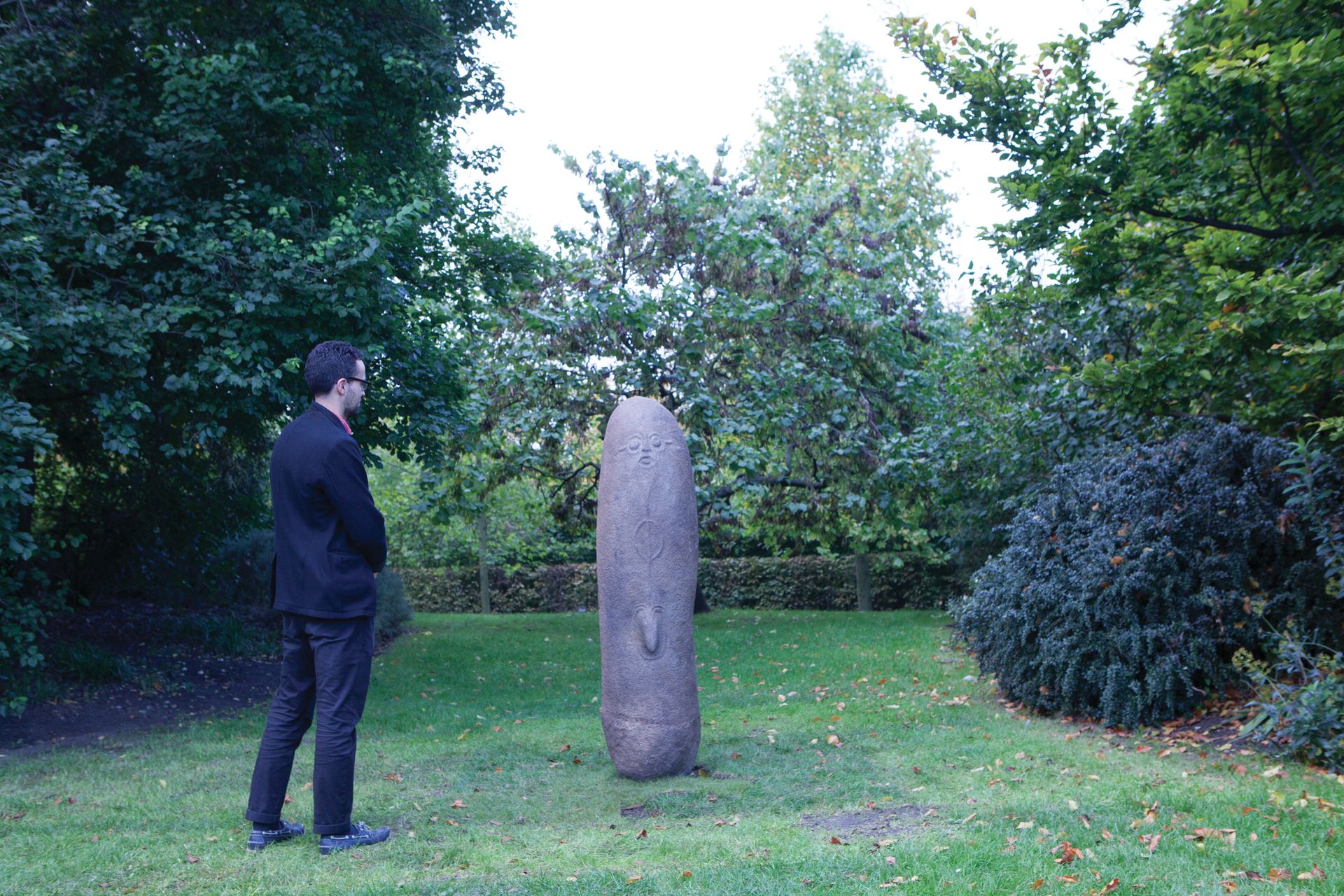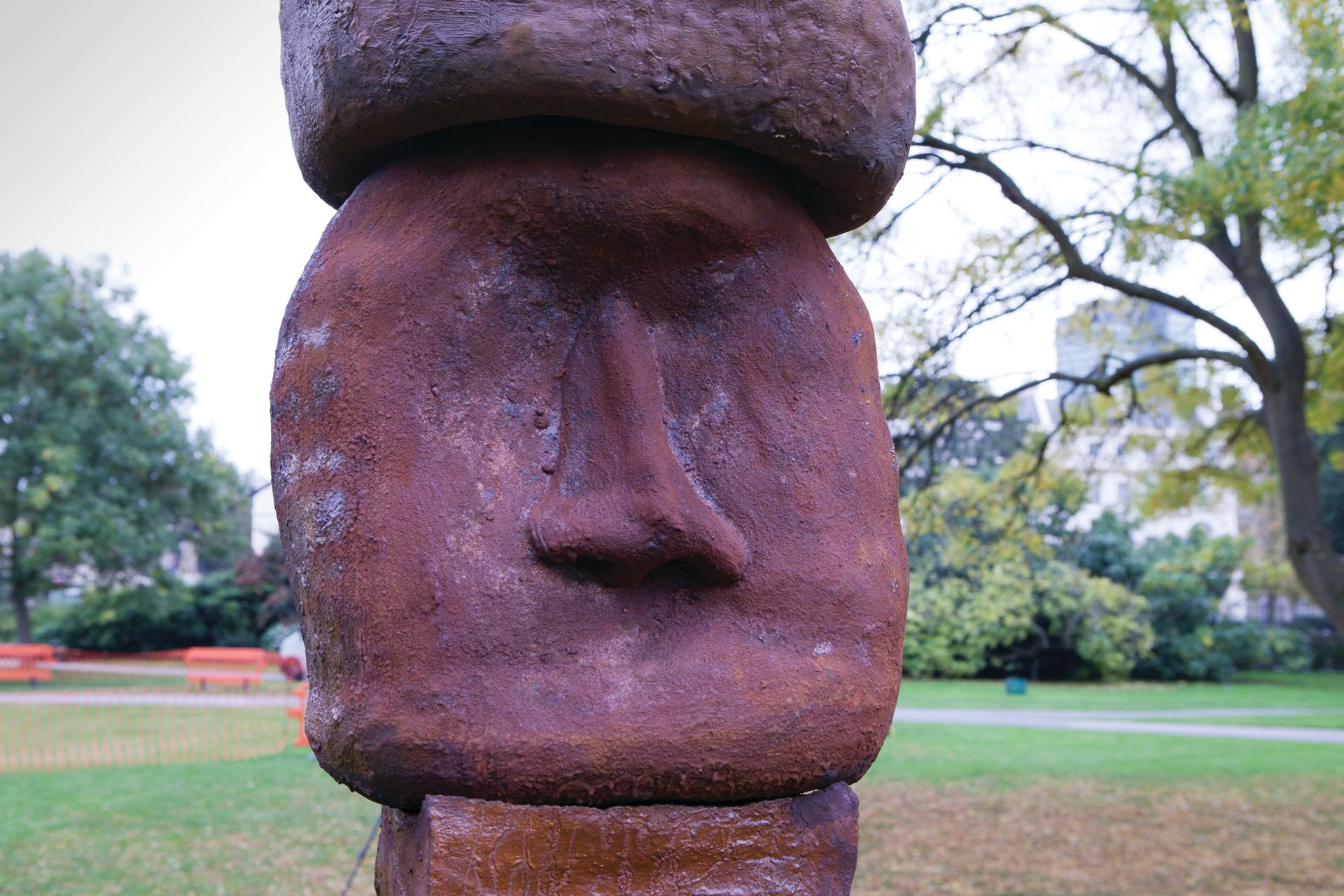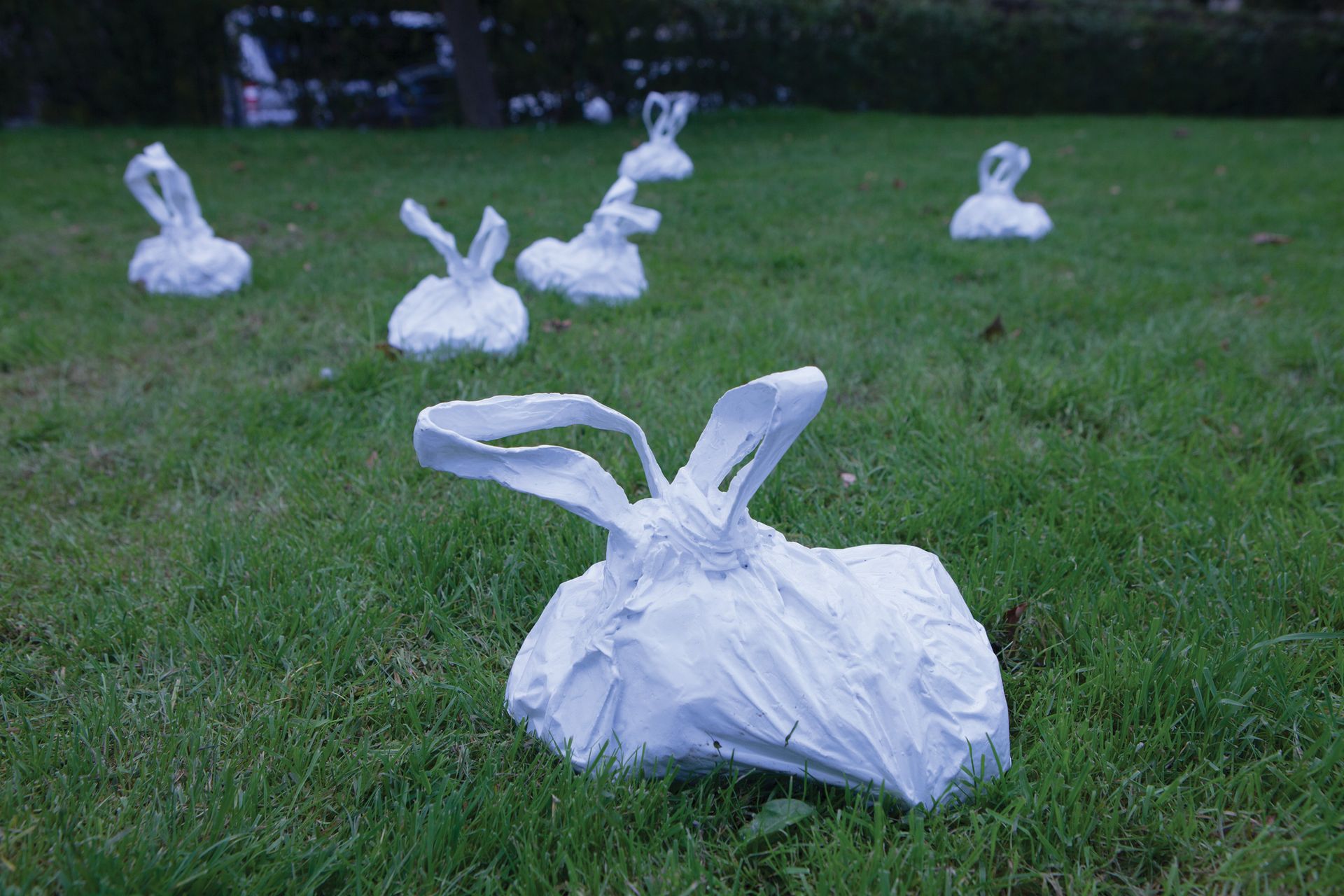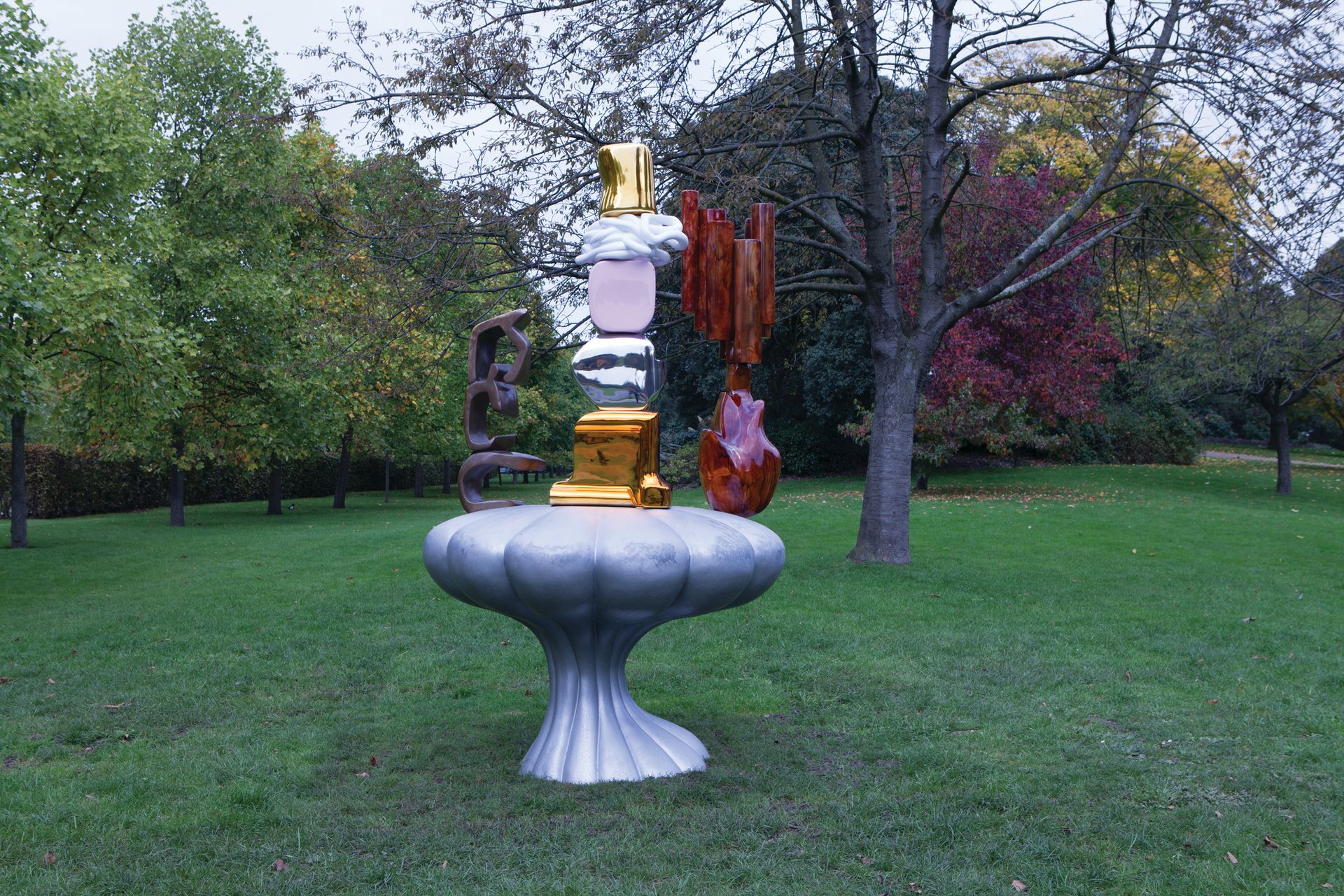Richard Serra, Lock (1976-77)
Peter Freeman, Inc
Created for Richard Serra’s show in 1977 at New York’s Whitney Museum of American Art, where it was installed outside the museum, this 50ft-long “prop” work was has been in a private collection in Denmark ever since. It’s part of a series of works that Serra began in 1968, and is quite rare and very elegant. We had to find the flattest piece of land to install it on—there has to be such precision where the grass meets the steel. As is often the case with Serra’s sculptures, people will walk through and around it as it slices through the landscape.
Pre-Ekoi, Anthropomorphic Monolith (11th-14th century)
Didier Claes

These monoliths come from south-east Nigeria and were made between the third and 16th centuries. This particular example dates from the 11th to 14th centuries. The sculpture is made from a river boulder, so it has already been naturally shaped and smoothed by the water. A face, a navel and other surface patterns have then been carved into the surface of the stone, almost like a tattoo; it’s interesting how man has always felt the need to render himself in sculpture. These monoliths were known as “dead person in the ground” and were said to hold the spirit of an ancestor.
Aaron Angell, Shoe Chew (2015)
Rob Tufnell

This is a steel sculpture of an oversized dog chew that looks like a boot. It’s a great piece because there are so many references and displacements in it. A member of the Clarks shoe-manufacturing family was stationed in Cairo during the Second World War, and came up with the idea of the desert boot by looking at the hybrids that cobblers made by mixing local and Western styles. Rawhide snacks for dogs are shaped like these shoes. Aaron is exploring the idea of the handmade by not separating art from craft, and creates a giant chew that is unique but strangely familiar.
Jesse Wine, Local Notion (2015)
Limoncello

When we look at this, we know it’s a totem pole; it vaguely refers to Native American as well as Maori sculptures. There are also associations with ancient Mexican Olmec sculptures. Jesse intended this to be made of bands of bright colour, but he didn’t want it to appear like a children’s toy, so instead he coated the ceramic with iron filings that have rusted and will continue to change while outdoors. The work has a relationship with its environment and the autumn leaves in the park. It’s a really personal piece, and in a way, it tells Jesse’s story—which is, of course, what totem poles do.
Leo Fitzmaurice, Litter (2015)
The Sunday Painter

Almost all of Leo’s work centres around consumerism and the debris that we discard on a daily basis. It’s a highly pertinent piece, as a 5p charge for plastic bags has just been introduced in England. Although it looks simple, Leo has used a complex casting process to make these carrier bags out of bronze—the first time he has cast in bronze. They are painted with white enamel, and from a distance, they look like white rabbits grazing in the landscape. It’s called Litter, which is a pun; lots of passers-by have mistaken them for rabbit sculptures and then enjoyed the double-take.
Gary Webb, Dreamy Bathroom (2014)
The Approach

This work denies itself because you look at it and you think it’s made of plastic; parts of it remind you of marshmallows or jewellery, but in fact it’s made of bronze and is as solid as a rock. Technically, it’s really something else. Webb has used very complex finishes, so parts of it look like amber or Bakelite from afar. It’s all of these things and none of them. It also riffs on the Victorian fountain, an example of which can be seen through the hedgerow in Regent’s Park, so there’s a nice juxtaposition with the surroundings.
Join Clare Lilley in the Frieze Sculpture Park for a special viewing on Wednesday 14 October, 11am-12.30pm

